Dashboard for Desktop > Dashboard Designer > Using Dashboard Parameters > Creating Parameters
This topic explains how to create a new dashboard parameter and specify its settings.
•Creating Parameters in the Dashboard Designer

 Creating Parameters in the Dashboard Designer
Creating Parameters in the Dashboard Designer
To create dashboard parameters in the Dashboard Designer, do the following.
•Click the Parameters button on the Ribbon's Data Source tab.
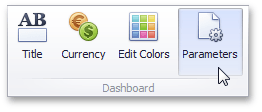
•In the invoked dialog, click the Add button to add a new parameter.
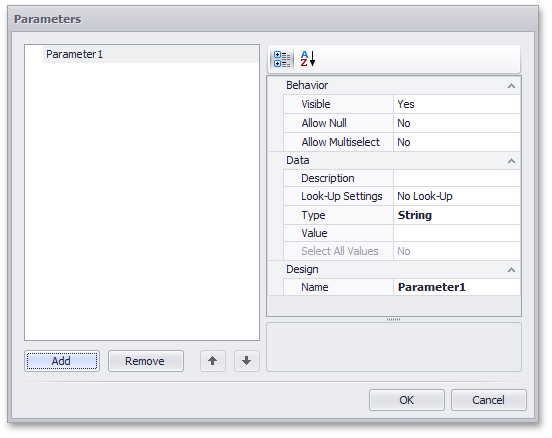
•Specify the following settings.
Settings |
Description |
Visible |
Specifies whether or not the parameter editor is visible in the Dashboard Parameters dialog. |
Allow Multiselect |
Specifies whether or not multi-selection is enabled for the current parameter. The following limitations are applied to parameters with multi-selection enabled. •Use the is any of or is none of operators to pass a multi-select parameter to a filter criteria or to the Expression format condition. •Use the In or Not In operators to pass a multi-select parameter to a calculated field expression. •Stored procedures used in the SQL data source do not support multi-select parameters. |
Allow Null |
Specifies whether or a not null value can be passed as a parameter value. |
Description |
Specifies the parameter's description displayed to an end-user. The parameter's description is the value displayed in the Parameter Name column of the Dashboard Parameters dialog. |
Look-Up Settings |
Specifies the parameter's look-up editor settings. |
Type |
Specifies the parameter type. |
Value |
Specifies the default parameter’s value. |
Name |
Specifies the parameter name. When creating and modifying parameter names, follow the rules below. •A name can contain letters, numbers and underscores. •A name cannot contain spaces. •A name cannot be an empty string. •The dashboard cannot contain parameters with the same name. •Names are case-sensitive. For example, you can create the names Parameter and PARAMETER . |
Then, click OK to add the created parameters to the dashboard.

 Look-Up Editor Settings
Look-Up Editor Settings
There are three types of look-up editor settings that can be specified for a parameter. Select the required type from the LookUpSettings drop-down list.
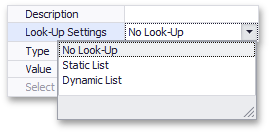
•No Look-Up - set the Value to use a static value as a parameter.

•Static List - click the ellipsis button to add static values for the current dashboard parameter.
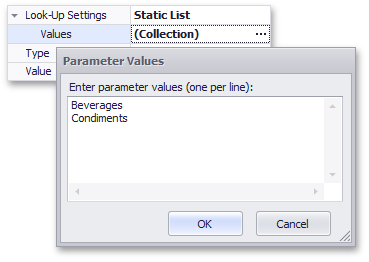
In this case, the Value specifies the default parameter's value.
•Dynamic List - allows you to use a list of values from the existing data source as a parameter. You need to select the required Data Source from the list of available data sources and data members for the dashboard parameter's display name and value, respectively.
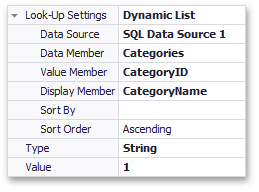
In this case, the Value specifies the default parameter's value.
Note
To learn how to create a data source for a dashboard parameter, see Providing Data.

 See Also
See Also
Copyright (c) 1998-2016 Developer Express Inc. All rights reserved.
Send Feedback on this topic to DevExpress.